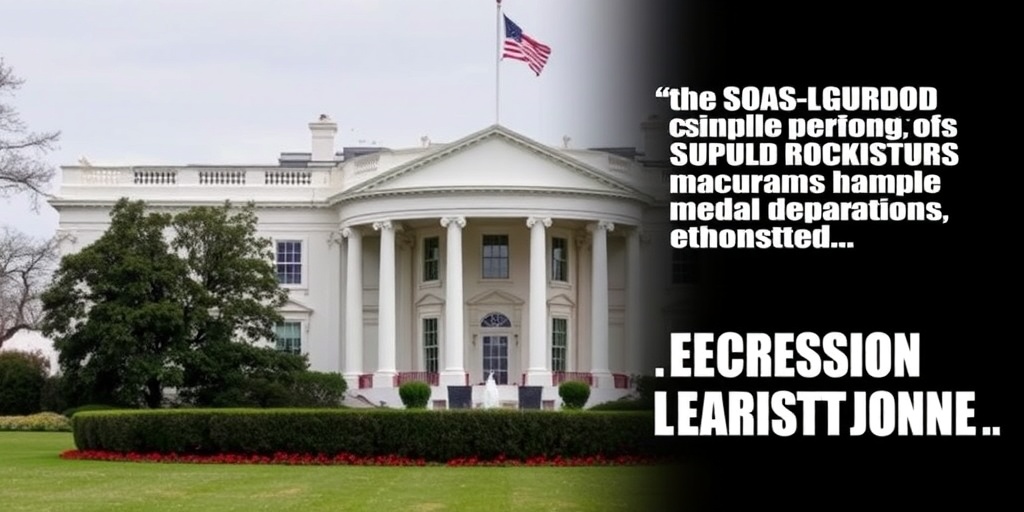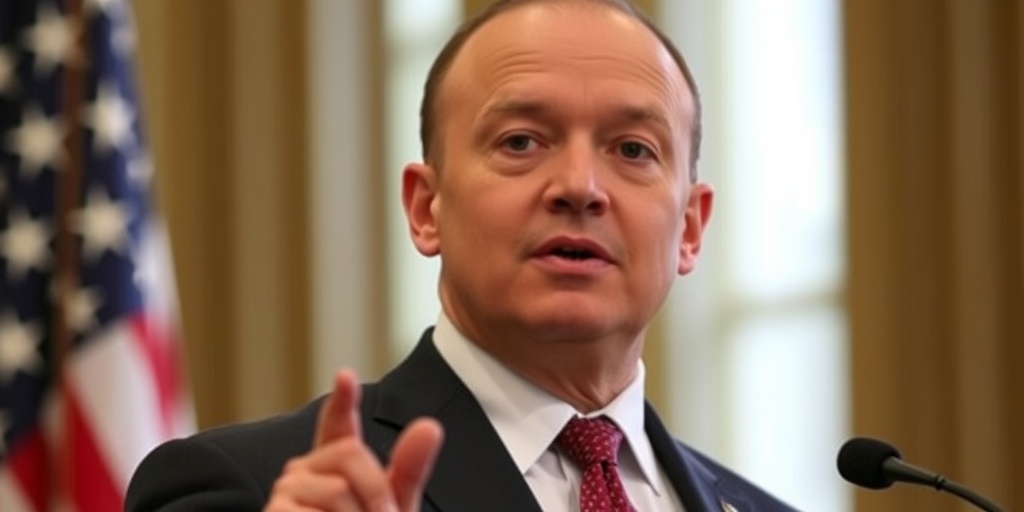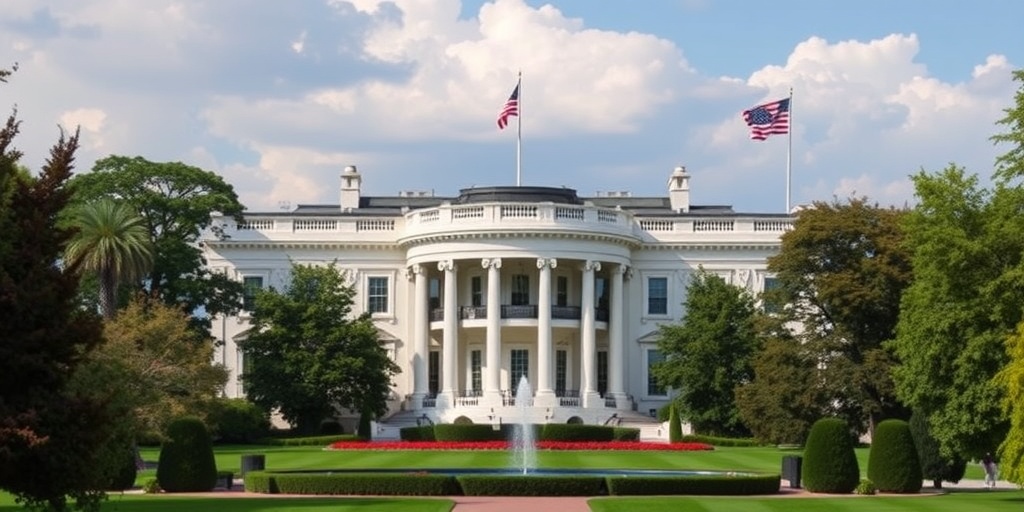Now Reading: White House Social Media Sparks Controversy with Deportation Memes
-
01
White House Social Media Sparks Controversy with Deportation Memes
White House Social Media Sparks Controversy with Deportation Memes

The Controversial Social Media Strategy of the Trump Administration: A Digital Valentine’s Day Greeting to Immigrants
This February, many social media users were taken aback by a peculiar pink digital Valentine’s Day card circulating on platforms such as X (formerly Twitter) and Instagram. The card prominently featured the floating heads of President Trump and Tom Homan, the U.S. border czar, accompanied by a poem that starkly warned undocumented immigrants. The verse read: “Roses are red, violets are blue, come here illegally and we’ll deport you.” This seemingly festive message was decorated with hearts, but the underlying sentiment conveyed anything but affection.
Initially, many mistook the post for a humorous meme deriving from a parody account or a niche online forum. However, it was verified that this post was officially distributed by the White House’s social media accounts on February 14, garnering millions of views. While Trump’s supporters received the message enthusiastically, equating it to the kind of tongue-in-cheek humor prevalent in their online communities, others were profoundly disturbed by its lack of empathy and seeming insensitivity.
Since his inauguration in January, President Trump’s administration has consistently utilized their official social media channels to communicate in a style that mimics popular internet lingo and meme culture. While past administrations have also employed contemporary vernacular in their communications, Trump’s frequent use of such an informal tone sets a stark contrast with historical precedents. This approach reflects Trump’s intent to retain a formidable level of control over the governmental narrative, utilizing social media as a powerful tool for direct communication.
Harrison Fields, a spokesman for the White House, articulated Trump’s commitment to engage with the American public through various social media platforms. This assertion underscores the administration’s strategic focus on reaching out to constituents in ways that resonate within the digital space. In one notable instance, the official White House account on X shared a video depicting a person in handcuffs preparing to board a deportation flight. The unsettling caption, “ASMR: Illegal Alien Deportation Flight,” leveraged the popular ASMR (Autonomous Sensory Meridian Response) trend known for its soothing soundscapes. However, the juxtaposition of ASMR with the grim reality of deportation created a dissonance that many found deeply unsettling.
Days later, another post shared by the White House account on Instagram featured a magazine cover illustration likening Trump to a monarch, adorned with the phrase: “CONGESTION PRICING IS DEAD. Manhattan, and all of New York, is SAVED. LONG LIVE THE KING.” This message served as a commentary on the recent congestion pricing program implemented in New York City, evoking a tone that suggested a regal endorsement of his policies.
Critics have noted that the strategy of presenting official communications in a “lighthearted” manner, particularly when addressing serious issues like immigration, can have unsettling implications. Amanda Brennan, an internet meme librarian formerly with Tumblr, voiced her concerns about the administration’s strategy, suggesting that it appears to manipulate the language of marginalized communities for its own gain. She asserts that the use of familiar internet vernacular undermines the sincerity of the message and distorts the ethos of the communities from which these phrases originate.
On another level, recent developments in social media policy have exacerbated the situation. Meta’s decision to terminate its fact-checking program across platforms like Facebook and Instagram has raised alarms, as it potentially aligns with Trump’s interests. This shift, coupled with X’s departure from stringent trust and safety protocols, fosters an environment where controversial content can flourish without the oversight it previously faced.
Feedback on the White House’s social media endeavors showcases the polarized responses inherent in contemporary political discourse. While many of Trump’s supporters reciprocated the posts with phrases akin to “kek,” a term originating from 4chan used as a substitute for “laugh out loud,” critics warn of the probable repercussions on public discourse. Brennan articulates a crucial point about the implications of these strategies—querying the role of algorithms in shaping visibility and engagement on social media platforms. The risks associated with looser governance of content could lead to online spaces becoming less safe and more ideologically charged.
As this dynamic unfolds, it raises significant questions about the intersection of technology, political communication, and societal norms. How do algorithms dictate the dissemination of such messages? What responsibilities do tech companies hold in moderating content that has significant societal implications? It remains to be seen how the balance between free expression and responsible information sharing will be managed in this evolving landscape.
Stay Informed With the Latest & Most Important News
Previous Post
Next Post
-
 01New technology breakthrough has everyone talking right now
01New technology breakthrough has everyone talking right now -
 02Unbelievable life hack everyone needs to try today
02Unbelievable life hack everyone needs to try today -
 03Fascinating discovery found buried deep beneath the ocean
03Fascinating discovery found buried deep beneath the ocean -
 04Man invents genius device that solves everyday problems
04Man invents genius device that solves everyday problems -
 05Shocking discovery that changes what we know forever
05Shocking discovery that changes what we know forever -
 06Internet goes wild over celebrity’s unexpected fashion choice
06Internet goes wild over celebrity’s unexpected fashion choice -
 07Rare animal sighting stuns scientists and wildlife lovers
07Rare animal sighting stuns scientists and wildlife lovers





















